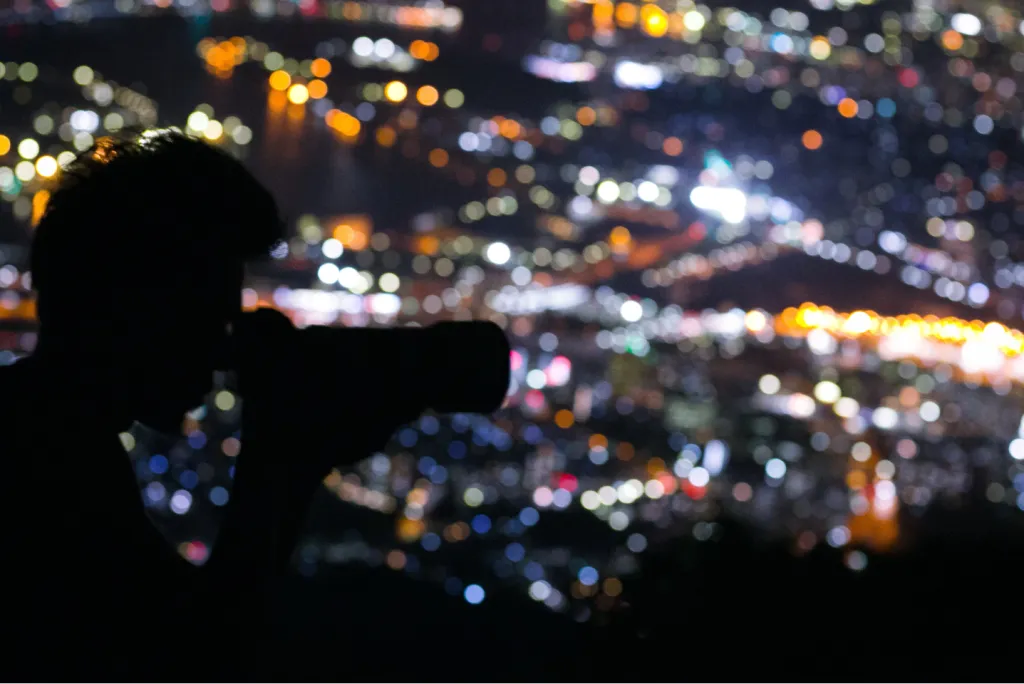This 2025 review evaluates current-generation imaging equipment based on critical low-light performance metrics including sensor technology, high-ISO noise control, autofocus reliability in darkness, and stabilization effectiveness. The analysis compares sensor formats from full-frame to Micro Four Thirds, examines the evolving role of computational photography in night imaging, and provides evidence-based recommendations for different shooting scenarios and budgets. Practical considerations like optimal exposure techniques and essential accessories are discussed to help photographers maximize their equipment's potential after dark. The findings highlight significant advancements in noise reduction and light sensitivity that are redefining the possibilities of nighttime image capture.
Introduction
Night photography is one of the most challenging yet rewarding genres of photography. Capturing sharp, noise-free images in low-light conditions requires the right gear, technique, and patience. According to a 2025 report by DXOMARK, cameras with larger sensors and advanced noise reduction algorithms now achieve up to 4 stops better low-light performance than models from five years ago.
Whether you're shooting cityscapes, astrophotography, or nighttime portraits, choosing the best camera for night photography can make a huge difference. In this guide, we’ll explore the top cameras for night photography in 2025, key features to look for, and expert tips to help you capture breathtaking shots after dark.

What Makes a Good Night Photography Camera?
1. Sensor Size and Low-Light Performance
Full-frame sensors (e.g., Sony A7 IV, Canon EOS R5) offer the best light sensitivity.
APS-C sensors (e.g., Fujifilm X-T5) are more compact but still perform well.
Micro Four Thirds (e.g., OM System OM-1) is smaller but benefits from computational photography.
2. High ISO Performance
Modern cameras like the Nikon Z8 and Sony A7S III can shoot at ISO 12800+ with minimal noise, thanks to BSI (Back-Side Illuminated) sensors and AI noise reduction.
3. Fast Aperture Lenses
Lenses with f/1.2 to f/1.8 apertures (e.g., Sigma 35mm f/1.4 DG DN) allow more light, reducing the need for extreme ISO settings.

4. Image Stabilization
Cameras like the Panasonic Lumix S5 II offer 6.5-stop IBIS, allowing handheld long exposures.
5. Autofocus in Low Light
The Canon EOS R3 and Sony A9 III feature -8 EV autofocus, making them ideal for dark environments.
Top Cameras for Night Photography in 2025
1. Best Overall: Sony A7 IV
Sensor: 33MP Full-frame BSI CMOS
ISO Range: 50-204,800 (expandable)
AF Performance: Real-time Tracking down to -4 EV
Pros: Excellent dynamic range, great for both photos and video.
Cons: Slightly slower burst shooting than A7R V.
Best for: All-around night photography, from cityscapes to astrophotography.
2. Best Budget Option: Nikon Z6 III
Sensor: 24.5MP Full-frame BSI CMOS
ISO Range: 100-51,200 (expandable to 204,800)
AF Performance: -6 EV low-light AF
Pros: Affordable, great IBIS, strong high-ISO performance.
Cons: Lower resolution than competitors.
Best for: Enthusiasts who want full-frame quality without breaking the bank.
3. Best Mirrorless for Astrophotography: Canon EOS R5
Sensor: 45MP Full-frame
ISO Range: 100-51,200 (expandable to 102,400)
AF Performance: -6 EV Dual Pixel AF II
Pros: High resolution, great for Milky Way shots.
Cons: Large file sizes, expensive.
Best for: Serious astrophotographers and landscape shooters.
4. Best DSLR for Night Photography: Nikon D850 (Still a Classic!)
Sensor: 45.7MP Full-frame
ISO Range: 64-25,600 (expandable to 102,400)
Pros: Outstanding dynamic range, rugged build.
Cons: No built-in stabilization, heavier than mirrorless.
Best for: Photographers who prefer DSLRs for long exposures.

5. Best Compact Camera: Sony RX1R II
Sensor: 42.4MP Full-frame
Lens: Fixed 35mm f/2.0 Zeiss lens
Pros: Ultra-portable, great image quality.
Cons: No interchangeable lenses, expensive for a compact.
Best for: Travel photographers who need a lightweight night shooter.
Tips for Better Night Photography
1. Use a Tripod for Long Exposures
Recommended models: Peak Design Travel Tripod, Manfrotto Befree GT.
2. Shoot in RAW for Better Editing
RAW files retain more detail in shadows and highlights.
3. Experiment with Manual Mode
Start with: ISO 1600-6400, f/1.8-2.8, shutter speed 1/30s-30s (adjust as needed).
4. Use External Lighting
A small LED panel (like the Aputure MC) can add fill light in portraits.
FAQs About Night Photography Cameras
What’s the best budget camera for night photography?
Nikon Z6 III ($1,400) offers great low-light performance. For cheaper options, consider used Sony A7 III (~$1,100).
Can I use a smartphone for night photography?
Modern phones like iPhone 15 Pro Max work for casual shots but can't match dedicated cameras' sensor size and light gathering.
Do I need a full-frame camera for night shots?
Not essential - APS-C (Fujifilm X-T5) and Micro Four Thirds (OM-1) can work well with fast lenses and good stabilization.
What’s the best lens for night photography?
Fast primes: 14-24mm f/2.8 for astro, 24-35mm f/1.4 for cityscapes, 50mm f/1.2 for portraits. Wider apertures collect more light.
How do I reduce noise in night photos?
Use lowest possible ISO, shoot RAW, apply noise reduction in post (DxO PureRAW works best), and expose properly in-camera.
Conclusion
Choosing the best camera for night photography depends on your budget and shooting style. In 2025, the Sony A7 IV stands out as the best all-around option, while the Nikon Z6 III is a fantastic budget pick. For astrophotography, the Canon EOS R5 is hard to beat.
No matter which camera you choose, remember to use a tripod, shoot in RAW, and experiment with manual settings for the best results. Have a favorite night photography camera? Share your experiences in the comments!


























































